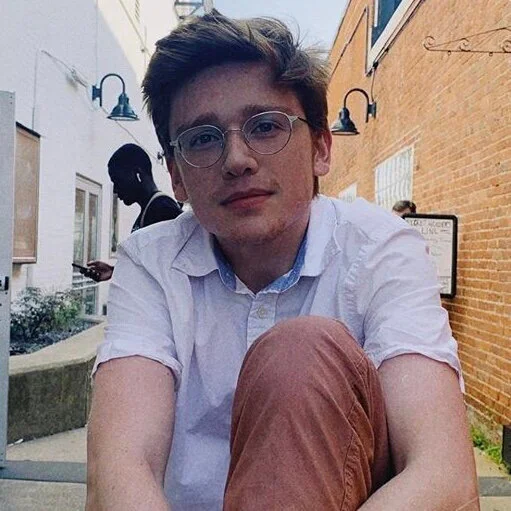Artists adorned New York City with Black Lives Matter tributes. But what becomes of graffiti when the world tries to erase it?
A mural in Minneapolis remembers George Floyd’s life. Lorie Shaull. CC BY-SA 2.0.
SoHo prepared for the worst. In the days before the election, the Manhattan neighborhood’s famed boutiques and shops barricaded their windows with plywood to protect their merchandise from looters. After a summer of uprising, one more round of rioting seemed inevitable. The wooden boards provided yet another reminder of how unlivable 2020 had become. It was as if the neighborhood shut its eyes to a reality too bleak to bear.
Enter into this dismal cityscape the artists who first put SoHo on the map. Before high-end shops and wealthy shoppers gentrified this stylish slice of Manhattan, street artists like Keith Haring and Jean-Michel Basquiat adorned its concrete buildings with graffiti. In the ‘80s and ‘90s, countless creatives made SoHo an international hub for artists of all stripes. Now, history comes full circle. Street artists see a rare and irresistible opportunity to take the plywood covering SoHo’s shops and create masterpieces.
Peace, love and police abolition. iamrenny. CCO 1.0.
Among them are Konstance Patton and Trevor Croop. This past summer, Patton focused on her Goddess Project, adorning the streets with vibrant, noble portraits of Black and Indigenous women. Croop spent much of 2020 abroad, leading art workshops and reconnecting with his Lebanese heritage. Within days of his return to the U.S., the two met on the street, throwing up artwork side by side.
Both seasoned street artists, they knew firsthand how transitory the form can be. An artist might spend hours on a painting that will be erased in a matter of days. The situation in SoHo is much more fraught. When businesses began reopening, they trashed the pieces painted on sheets of plywood. Others scrambled to grab as many panels as they could and loaded them into vans to sell to the highest bidder.
Can’t we just get along? iamrenny. CCO 1.0.
Recognizing the inestimable value of these pieces of art, Patton and Croop founded the SoHo Renaissance Factory (SRF), which stores wooden boards bearing protest art in an empty SoHo dance studio. It consists of themselves and three fellow artists: Sule, Amir Diop and Brendan McNally. They developed an extensive network of friends, artists and security guards who alert them when a work of art is about to be trashed. They rush to the scene in an attempt to save the piece. Sometimes they arrive in the nick of time; other times they do not.
SRF member Amir Diop experienced the latter firsthand. During the protests demanding justice for the death of George Floyd, Diop painted a mural on the plywood boards covering the Museum of Modern Art’s (MoMA) design store. It showed smiling faces circling around a black hole beneath the words “Take me to a place where Black Lives Matter.” Only days after he painted it, MoMA tore down the piece and shredded it. In the words of Diop, “They said that place doesn’t exist and they just threw it in the garbage.”
Spray their names. drburtoni. CC BY-NC-ND 2.0.
Street artists enjoy few legal protections. The Visual Artists Rights Act (VARA) of 1990 protected art from being mutilated or destroyed but only if it reached a “recognized stature.” In the digital age, this term is ambiguous. Instead of a signature, artists leave their social media handles in a painting’s corner, raising the question of whether online fame qualifies under VARA. For the time being, however, artists cannot depend on the art establishment. If the MoMA won’t recognize art, it is unlikely that a court will.
A moment to remember. drburtoni. CC BY-NC-ND 2.0.
The future of the SRF is unclear, but it does look promising. The group recently struck a deal with Mana Contemporary, an arts center in New Jersey, to display the wooden boards in a public show next year when COVID-19 restrictions hopefully ease up. For now, the SRF has moved to a spacious studio in the NoMo SoHo Hotel, where it landed a residency. The new space offers a comfortable environment to create art, but the work of the SRF will always be rooted in the streets.
See the work of the SoHo Renaissance Factory on its website:
https://sohorenaissancefactory.com/
Or check out each artist’s work on their Instagram pages:
Konstance Patton - @konartstudio
Trevor Croop - @light.noise
Sule - @sulecantcook
Amir Diop - @amir.diop99
Brendan McNally - @brendantmcnally
You can also support the mission of the SoHo Renaissance Factory by getting involved with organizations that support racial justice, some of them listed below:
Black Lives Matter - https://secure.actblue.com/donate/ms_blm_homepage_2019
Color of Change - https://secure.actblue.com/contribute/page/support-us?refcode=coc_website_popup
SURJ - https://www.showingupforracialjustice.org/donate-to-surj.html
Organizations for Black Struggle - https://www.obs-stl.org/
Project South - https://projectsouth.org/
Michael McCarthy
Michael is an undergraduate student at Haverford College, dodging the pandemic by taking a gap year. He writes in a variety of genres, and his time in high school debate renders political writing an inevitable fascination. Writing at Catalyst and the Bi-Co News, a student-run newspaper, provides an outlet for this passion. In the future, he intends to keep writing in mediums both informative and creative.






